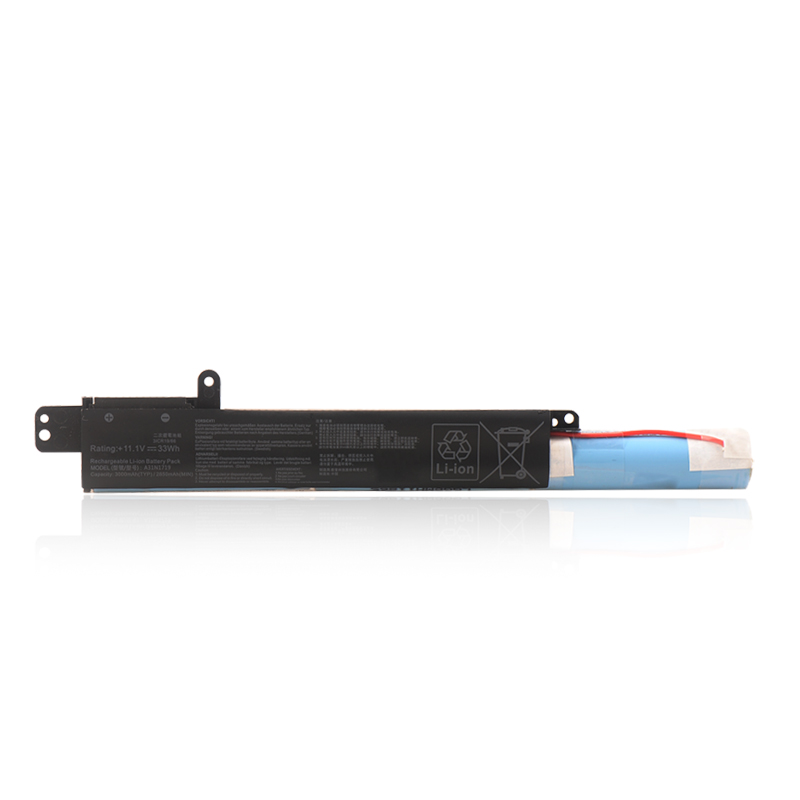As a world-renowned computer brand, ASUS laptops are widely favored for their stable performance and exquisite design. However, many users said that they occasionally encountered the problem of battery failure during use, which brought great trouble to their work.
Here are some solutions that I hope will help you.
Please check the connection and appearance of the battery/power adapter first
Please use the original ASUS power adapter to avoid compatibility issues. If you have different models of ASUS laptops, please do not mix power adapters because the power output specifications may be different.
Please check the power adapter connector, as shown in the figure below: A power cord end/B socket end/C computer end, to see if they are loose, or try changing the socket.
Please check whether the power adapter or cable is damaged. If damaged, it is recommended to go to an ASUS service center for replacement.
After confirming the above situations, please try to reconnect the connector on the power cord/socket/computer side.
If your laptop has a removable battery, try reassembling the battery.
If your laptop/battery is not charging because it has been stored for a while, it is recommended to connect it to a power source and leave it overnight to charge. Longer time and lower charging current may fix the problem.
If the issue persists after completing the above checks, continue with the following troubleshooting steps.
Execute Clear CMOS (EC reset)
Please remove all external devices, such as external hard drives, printers, memory cards, optical drives (if internal, please remove the optical disk), as well as adapter cards in card readers, etc.
Turn off the computer and remove the power adapter.
Remove the laptop’s battery (if your computer has a removable battery module).
Press and hold the power button for 40 seconds (hold it down) to perform an EC reset and clear the settings saved in CMOS.
Reconnect the power adapter and battery and turn on the computer to see if the problem is solved. If the problem persists, continue with the following troubleshooting steps.
Update and confirm that your computer’s BIOS, Windows packages and drivers are the latest versions
Software updates usually help improve system stability and optimization, so it is recommended that you frequently confirm that your device is using the latest version. To perform a BIOS reset, please first enter your computer’s BIOS setup screen. Learn more about how to enter the BIOS setup screen.
How to perform a BIOS reset in the UEFI interface
In the UEFI interface, you can use the arrow keys and Enter key on the keyboard, the touchpad or the mouse to make selections and confirmations.
In the UEFI interface, there will usually be an “Advanced” or “Boot” option that you can select using the arrow keys and then pressing Enter.
In Advanced or Boot options, you may find an option called “BIOS Setup” or “UEFI Setup”, use the arrow keys to select it and press Enter to enter the BIOS setup interface.
After entering the BIOS setup interface, you can find an option called “Load Defaults” or “Restore Defaults”, use the arrow keys to select it and press Enter to restore the BIOS settings to the default values.
The BIOS reset is complete and the computer will restart and enter Windows. Please confirm whether the problem is solved. If the problem persists, please continue with the troubleshooting steps in the next section.
Perform battery problem diagnosis through MyASUS
Type “MyASUS” in the Windows search bar and click the “Open” button in the search results to launch the MyASUS application. If you cannot search for MyASUS, it means that your computer may not have it installed.
After opening MyASUS, you will see a clear and intuitive interface. In the interface, find and click the “System Diagnosis” option.
Note: If your computer does not display the System Diagnostics page in the MyASUS software, it means your computer does not support this function. Please go to the next section and continue troubleshooting.
If everything goes well, in the MyASUS software, click “Battery Problem”
Please connect your computer to a power source and click “Start Check” .
If an error is detected, try the troubleshooting suggestions for error issues in MyASUS. If the problem persists, continue with the troubleshooting steps below.
Reinstall the battery/power adapter driver through Device Manager
Type ” Device Manager ” in the Windows search bar and click ” Open “.
Once in Device Manager, find the “Battery” device type and click the triangle next to it. This will expand the list of battery devices. In the expanded list, find “Microsoft ACPI-Compliant Control Method Battery”, right-click it, and select “Uninstall device”.
In the battery device type, right-click ” Microsoft AC Adapter ” and click ” Uninstall device “.
After uninstalling the Microsoft ACPI-compliant control method battery and Microsoft AC adapter drivers, restart the computer and the drivers will be automatically reinstalled. Then confirm whether the problem is solved.
If you have completed the above troubleshooting and your issue is not resolved, please contact ASUS Customer Service for further information.
If this article still doesn’t help your laptop battery, you can buy a new battery at BatteryMall.com
If you want to learn more about batteries, please visit:BatteryMall.com/blogs/support

